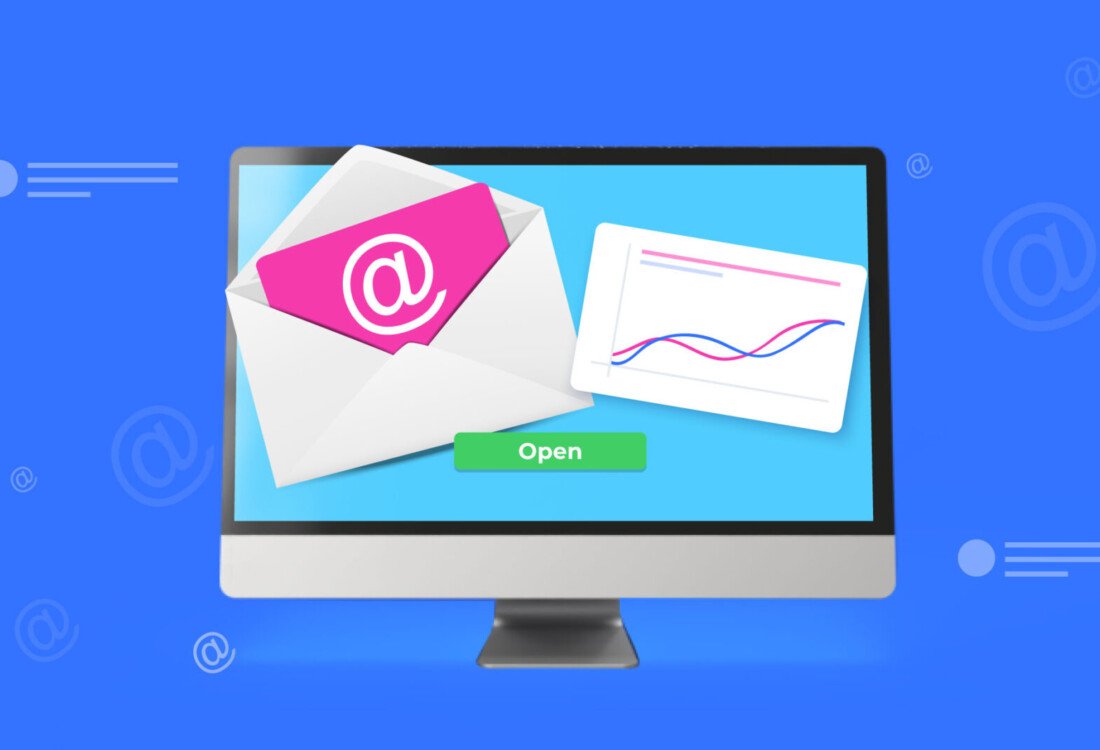
How to Make Money From Your Blog? Monetization Guide
In this guide, you will learn how to prepare your blog for monetization and monetization strategies for blogs with small (new blogs), medium, and large audiences.
If one of the driving factors for starting a blog was to make money online, then this is the guide you have been waiting for. For those who work full-time jobs, earning money from your blog is a great way to generate side income. For those who plan to dedicate themselves to monetization strategies, it’s possible to use it as a regular source of income.
Monetization misconceptions
First, let’s clear up a few misconceptions you may have heard about blog monetization.
Passive income is the way to go so you can earn money while you sleep.
This isn’t entirely false, but it’s not as simple as it sounds either. Bloggers who are well known for their passive income generation did not start their blog one day and earn piles of money in their sleep the next. Just like any other income source, passive income requires a good bit of hard work, in the beginning, to set up. But if you do it right (and we’ll teach you how), you can start earning money, even while away from the computer.
Income reports can show you the path to earning top revenue.
Income reports are monthly blog posts written by bloggers who make money online, showing exactly how much they earned throughout the month and how they did it. You can see some great examples of income reports from Pat Flynn and Matthew Wood- ward to get an idea of how bloggers are generating revenue.
What you want to be on the lookout for are misleading income reports – those that show how much a blogger makes, but not how much they spend. Many bloggers invest a lot of money into their blog on a monthly basis in order to earn revenue, but some conveniently leave that fact out in their income reports, making it look like they are earning tons of free money.
Whenever you craft your own monetization plan, you will need to keep some expenses in mind. These include your web hosting, email marketing software, search and social media tools, mastermind memberships, online advertising, and similar costs.
Wait to monetize until after you grow an audience:
This is false. Although you can only utilize certain monetization strategies with a budding audience, you shouldn’t get your readers used to an advertisement-free blog, then spring into monetization mode as soon as you hit a certain number of visitors. This might surprise and put off your original readership.
By putting some monetization strategies in place at the very beginning, you will have the chance to earn a little money from the beginning while letting your audience know exactly what they are going to get. Sure, you can add or subtract monetization methods as an ongoing process to test which ones earn the most revenue, but don’t feel like you have to wait to start.
Now that we’ve debunked a few misconceptions about making money through blogging, let’s look at how you can make money blogging.
Preparing to monetize
Before you start monetizing, there’s one basic thing you need to do to ensure your current and future monetization success: start building an email list.
Here’s why it is so essential:
If you start to capture email addresses at the start of your blog, you will have the chance to retain your first visitors as lifelong readers. No one has to know there’s only one subscriber on your mailing list so far if you don’t tell them.
- Before you have monetization strategies that need email pro-
motion, you can use your email list to drive traffic to your blog
by promoting your content.
- Your email list subscribers are yours. You can’t save contact
information about fans of your page or followers on your Twitter account. Your email list, on the other hand, is exportable. So if your email marketing provider decides to shut down, you take your list and move it elsewhere as opposed to lose it complete- ly.
- Your email list subscribers have more of a chance to see your email messages than social media updates. Facebook reach
is slim, as are other networks since most people are following hundreds of other people and businesses. Getting in someone’s inbox means that they will at least see your name on a regular basis, regardless of whether they open that email. And when they do open that email, you have their undivided attention.
- When you start utilizing monetization methods such as email list sponsorship, affiliate marketing, or selling your own products, you will have grown a loyal audience that is used to receiving and consuming your emails. This is much better than starting a list and selling to your subscribers right away.
Fortunately, email marketing does not have to cost an arm and a leg before you start generating revenue. MailChimp allows you to have 2,000 subscribers and send 6 emails per month to them (a to- total of 12,000 emails) for free. It’s a great option for those who need to start a list, but don’t have the budget until they start earning revenue.
Now that that’s out of the way, let’s start with some specific monetization strategies.
Monetization strategies for new blogs
If you have a relatively new blog, or one that doesn’t receive a lot of traffic, then the following are monetization strategies you can put into place to start the revenue generation process.
Affiliate marketing
Affiliate marketing allows you to generate income by promoting other people’s products for a small commission. This is probably the easiest monetization method to get into at the start because you can apply to most programs with little to no audience. All you need is your blog.
Here are a two examples
If you have a blog all about reviewing WordPress themes, then you should apply to affiliate programs for any WordPress theme you want to write about and promote. Visitors to your blog would likely be interested in WordPress themes, and therefore would be likely to buy a WordPress theme after clicking on a link to it from your site. Popular affiliate programs for WordPress themes include Studio- Press, DIYthemes, and ElegantThemes.
If you have a blog about gardening, then you should apply to affiliate programs for gardening books and products. Amazon Associates is a great affiliate program to join for any niche as they sell books and products related to just about everything.
Another approach is to be an affiliate for anything you have paid for and use on your blog. So, if you use a StudioPress WordPress theme, MailChimp email marketing software, Hostgator hosting or any other product with an affiliate program, be sure to create a page on your blog with resources aimed at other bloggers in the niche.
As your blog grows in popularity, other bloggers will want to follow in your footsteps and may sign up for the same services you use for their own blog, thus generating some revenue for you. To find other affiliate programs by doing a search for paid products and services use the search term + affiliate program.
You can also go to affiliate networks (sites that connect publishers like you and merchants who want publishers to promote their products) and look at the products they have available to promote. Networks like Shareasale, E-junkie and Clickbank allow you to preview programs before you join, whereas networks like CJ require you to sign up before you see their programs.
Following are best practices for promoting affiliate products
Write reviews about the product or service and include an affiliate link within your review post. Don’t just regurgitate the information found on the product or service sales page, but write your experience with it inside and out. People can recognize a thorough, honest review from one that is done purely to generate revenue.
Create a resource page on your blog of the top products and services you recommend, including an affiliate link for each, plus a link to your in-depth review if applicable.
Get banners for the top products and services you know your audience will love and put them in your blog’s header, sidebar, and at the end of posts. Affiliate product banners are also great placeholders for future advertising spots you may want to sell when you start getting a substantial amount of traffic.
Email your list whenever you write a great review or a particular affiliate program has a great special going on that your subscribers would be interested in.
Be prepared to do special promotions on your blog and email list around Black Friday and Cyber Monday – it’s the hottest time to share affiliate product sales and earn some great income.
Important reminder: Whenever you promote an affiliate product, be sure to include a disclaimer in your review, at the top of your resource page or in your emails that you are an affiliate of the product. It’s a good way to build trust with your audience and it’s also required in certain countries like the United States.
Google AdSense
Once you have created some content for your blog, let’s say 10 – 15 blog posts, you can apply for Google AdSense. Google AdSense allows publishers to generate income from advertisers who want to place ads on the Google Network. Once you sign up and get approved, you will be able to customize ad slots for links, banners, images, and video and place the Google AdSense code for each of these ad slots onto your website. After an hour or two, Google will begin to match the best ads to your website.
The key to Google AdSense is to follow the guidelines and know where to place your ads for the best results. You can experiment with ad placement in your blog’s sidebar, below the title of individual blog posts, in your blog’s header, and in other areas. Google even offers some example site layouts that will help you get the most clicks for your ads.
One thing to keep in mind about Google AdSense – if you are making good money through affiliate marketing or selling your own products and services, the last thing you will want is to encourage someone to leave your website by clicking on an ad. Once you begin making good money through other monetization strategies, you may want to consider removing Google AdSense. It’s better to get a $20 sale than a $0.05 click.
Monetization for blogs with small size audiences
Once you start building up a loyal readership and a good flow of traffic, you can start looking into additional monetization strategies such as the following.
Selling ads
Depending on your niche, you can generally start selling ad space directly to advertisers once you get a certain traffic volume. You can manually manage ads on your blog, or use platforms like BuySellAds that can help you sell and manage ads quickly through their platform with a snippet of code that goes on your website where you want particular ad sizes and types to be displayed. It’s also a great platform to use in researching your traffic volume versus how much you can charge for ads.
For example
An automotive site with 20,000 monthly impressions charges $50 per month for their 728×90 leaderboard ad space.
A site about mythology with 35,000 monthly impressions charged $3 per 1,000 impressions per month for their 300×250 top sidebar ad space.
A site on investing with 50,000 monthly impressions charged $8.75 per 1,000 impressions per month for their 728×90 leader-board ad space.
This is a monetization strategy that has the potential to generate continually increasing amounts of revenue based on your ability to drive more traffic to your blog. Be sure to create an advertising page on your blog and update your metrics (traffic, social audience, email list subscribers, etc.) regularly so you can continue to increase your ad pricing monthly.
Sponsored reviews
In addition to selling ad space, you can also offer sponsored reviews. This is where someone pays you to write about their product or service on your blog. If you choose only the products your audience will most likely be interested in, you can earn money while creating great content — a win-win situation. If you choose any product just because someone is paying you, however, you could lose your hard-earned audience as they will not be interested in the content.
When you do sponsor reviews, you should always remember Google guidelines about using the rel=nofollow attribute for paid links, or links within a paid review. People will likely offer you more to have a do-follow link. Use your own discretion as to whether the price advertisers offer for a sponsored review is worth risking the wrath of Google.
In order to write a great sponsored review, insist that you want to use the product or service for a trial period to really get some insight into it. That way, you can write an honest, compelling review.
Selling your own products or services
If you have a loyal following, then you don’t need a large audience to start selling products or services. All you need is to be able to answer the following questions.
- Do people ask me for advice or help?
- What do people ask me for advice or help for?
- The first question will help you determine if there is a paying
the market for something you can provide for people as a salable product or service, and the second question will help you determine what that product or service is.
Here are a few quick examples
People regularly ask you how you customized your WordPress theme’s functionality or design, and want you to do the same for their blog. You can take this as a sign that you need to create an information product (such as a video tutorial series) on ways to customize WordPress themes or offer a service where you will customize WordPress themes.
People flood you with requests for prints of your photography. This is an opportunity to open an online store to sell your photography.
People regularly ask you to write content for their business. You can take this as a sign that you need to offer freelance writing/copy-writing services.
People want to know how you market your blog and want to “pick your brain” about it on a quick phone call. This as a sign that you need to offer consulting services.
If you pay attention to what people are asking you for most often, you’ll likely discover a great product or service you can offer. Because for every person that asks you about something, there are probably a dozen others who would also ask the same thing.
Monetization for blogs with large audiences
This is a monetization strategy that has the potential to generate continually increasing amounts of revenue based on your ability to drive more traffic to your blog. Be sure to create an advertising page on your blog and update your metrics (traffic, social audience, email list subscribers, etc.) regularly so you can continue to increase your ad pricing monthly.
Syndicating content
You’ve likely seen those blocks of links on sites like CNN, Time, and other media outlets that say “Around the Web” or “You Might Also Enjoy”. These are generally created by code from content syndication networks (Outbrain, Taboola, etc.), many of which want you to have a large base of traffic before you are considered to apply as a publisher to their networks.
By including blocks of related content like this to your blog, you’ll be earning revenue each time someone clicks on an article that looks interesting to them. It’s a good situation for both the publisher and the reader – the publisher (you the blogger) gets money for sharing related, valuable links. The reader gets the opportunity to explore new content, and will likely think of your blog as a great source of content to check out.
Selling your blog
It might sound a bit crazy, but if you have a blog that isn’t directly tied into your own name, products, or services, and mostly depends on ad revenue, you may want to consider selling your blog later down the road. Some blogs – like the 20 listed in this article — have earned over $1 million dollars in a sale thanks to how much traffic received, the quality of content they house, and the advertising dollars they rake in on a monthly basis. The more traffic, quality content, and advertising dollars you earn with your blog, the more you can sell it for later down the road if you so choose.
Conclusion
We hope that you’ve enjoyed this guide on making money with your blog. There are many other monetization strategies you can try with your own blog – these are just the most popular ones that tend to generate a lot of income for a lot of bloggers!








